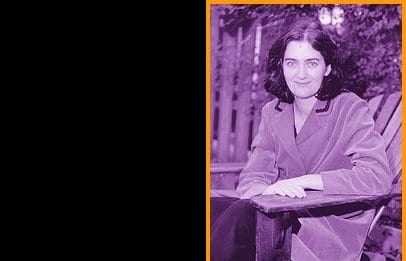Stories about fair maidens who crossdress as dashing young men and win the hearts of other gals have been popular with mainstream audiences since medieval times.
“The story usually goes that a woman is forced to dress as a man for some supposedly utilitarian reason – to get an inheritance or avoid a malevolent relative. Another woman unwittingly falls in love with her and at the end there is a big ‘a-ha!'” says writer Emma Donoghue.
“There’s the pretence that the author thinks that sex couldn’t really happen between females. Of course, we know from legal texts that everyone did know that sex [between women] was possible… It’s a way to play with queer plots without acknowledging it.”
Donoghue refers to this story-line as “the female bridegroom” – a theme she’s exploring in a book she is currently writing on lesbian-themed plots in literature throughout the ages.
One of the earliest versions of this traditional plot is found in a French novel by an anonymous writer called Huon de Bordeaux. In this 1220 book the emperor’s daughter, Lady Olive, falls in love with Ide, a woman who disguised herself as a male squire in order to run away from a molesting father.
After they are legally married Ide reveals her true identity. “Olive doesn’t just flounce on her pillow and get cross,” says Donoghue.
“My right sweete lover,” says Olive in the text, “discomfort not your selfe, for you shall not be accused by me neither to no man nor woman living, we are wedded together, and I will be good and true to you…. For I see it is the pleasure of our Lord God.”
Unfortunately the emperor discovers them and, distraught, he orders them both burnt alive. At the last moment God intercedes – Ide is miraculous transformed into a man and it is foretold that the emperor will soon die.
“The implication is that he is being punished for sentencing the pair to death,” says Donoghue.
Stories featuring a female bridegroom were popular in 16th Century Italian and Spanish plays, and English drama from the 16th to the 18th century. Two of the most famous examples come from Shakespeare’s As You Like It and Twelfth Night which feature romances between crossdressed women and other females.
The plot was less popular in the 19th century but returned in the 20th. The film version of IB Singer’s Yentl, the story of a young Jewish girl disguised as a boy who ends up romantically entangled with both a man and a woman, was a hit in the 1980s. Ann-Marie MacDonald’s play Goodnight Desdemona (Good Morning Juliet), which links Juliet with a crossdressed female, won over mainstream Canadian audiences in the ’90s.
Some scholars have claimed that these plots are not really lesbian literature since the woman who is swept off her feet by the crossdresser thinks she is falling for a man.
“Of course,” says Donoghue, “the audience and the author know exactly what’s going on.”
Donoghue considers female bridegroom tales an important resource for seekers of lesbian, as well as transgendered history. However she cautions that literary and political histories shouldn’t be confused.
“Crossdressed women on stage in Shakespeare’s plays were figures of fun and adventure. Crossdressed women in the audience would be seen as uppity and transgressive and could have faced criminal charges.”
Donoghue, who is best known as a lesbian novelist (author of Hood, Stir-fry and the forthcoming Slammerkin), become interested in lesbian plots when she saw the same stories appear again and again in her literary explorations.
Along with examining the female bridegroom, Donoghue’s book will also investigate other common plots like love triangles between two women and a man, and the enduring commitment between female friends whose relationship is tested by trials.
“When I first started I thought this was a small little area, but every year more and more texts turn up,” says Donoghue. “There’s the illusion that lesbianism was never talked about in the past, but some of these plots appear in the folklore of almost every period and culture.”

 Why you can trust Xtra
Why you can trust Xtra


